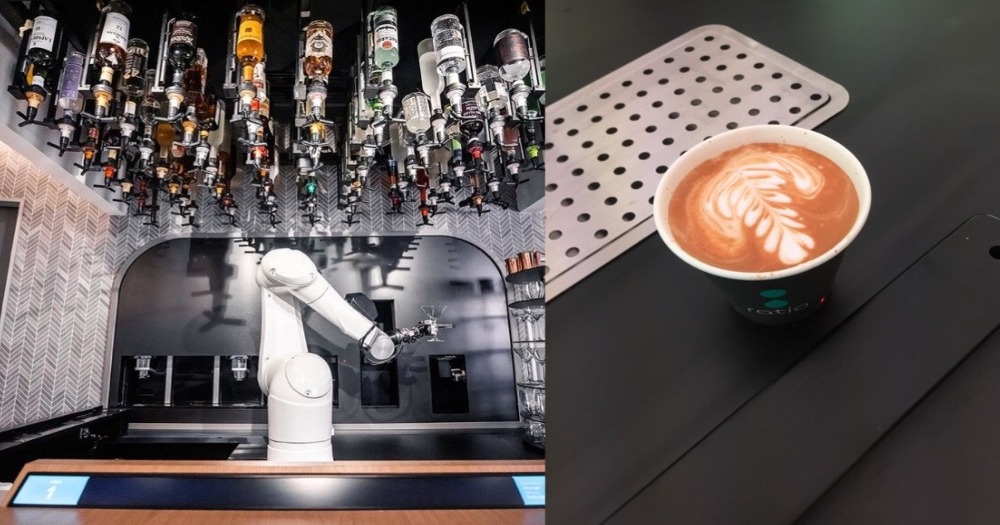Follow us on Telegram for the latest updates: https://t.me/mothershipsg
Recently, I stumbled upon a café in the heart of Orchard Road.
In place of a human barista, two robotic arms moved in tandem to brew various concoctions of coffee, such as Latte, Espresso, and Americano – a fascinating sight, to say the least; to my surprise, the coffee tasted delicious too.
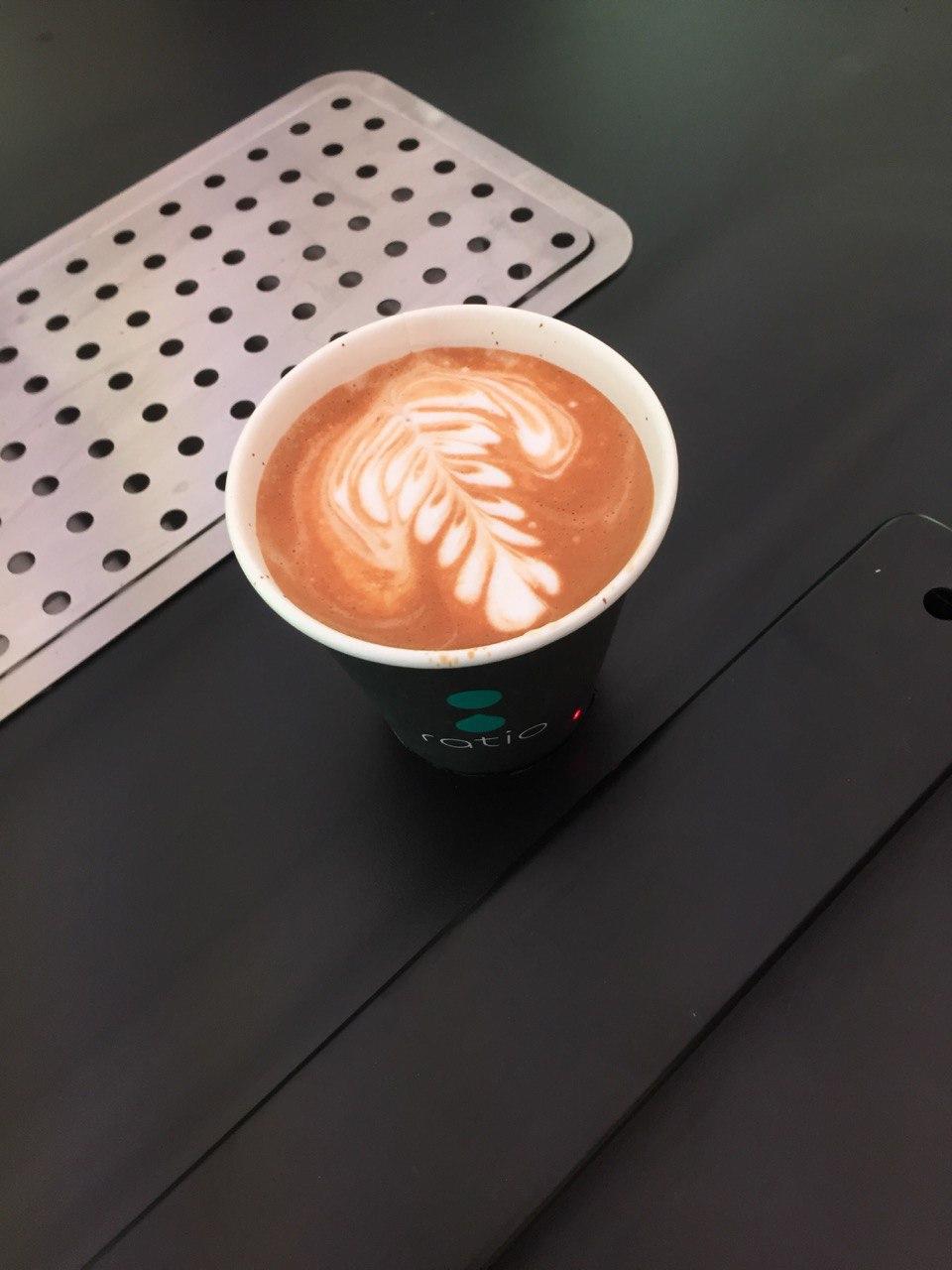 Great-tasting coffee (with latte art to boot) produced by a robotic barista. What a brave new world, indeed. Image by Claire M Teo.
Great-tasting coffee (with latte art to boot) produced by a robotic barista. What a brave new world, indeed. Image by Claire M Teo.
This robotic café is an example of the rapid phenomenon that has been gaining huge traction across the world of late. From cleaning the dishes to serving food, F&B outlets utilise robots in a variety of ways.
Increasingly, however, robots have also been employed as “baristas” who prepare beverages for patrons.
Why are more robotic cafés emerging?
Once cast aside as merely a futuristic dream, the existence of robotic cafés has now become a next-door reality.
The world’s first robotic café, The Ratio Inc,. was launched in Shanghai, China by Singaporean-owned automation and robotics start-up, ROSS Digital.
The founder, Gavin Pathross, was inspired to set up the world's first robot café after he saw the potential of robotics in the F&B industry. Since then, the company has expanded across the globe and numerous others have followed in its footsteps.
But why are more people setting up such automated cafés?
According to the New York Times , one of the main reasons is to alleviate staff shortages, especially for manual labour.
This manpower crunch is particularly evident among baristas. Starbucks, for example, has resorted to raising its average barista wages from US$14 (S$19) to US$19 (S$23) per hour as a result of this shortage.
Locally, the first successful robotic barista, ELLA, has also been designed for this very reason. I spoke to Keith Tan, the man behind ELLA and local start-up, Crown Digital to find out more about robot cafés.
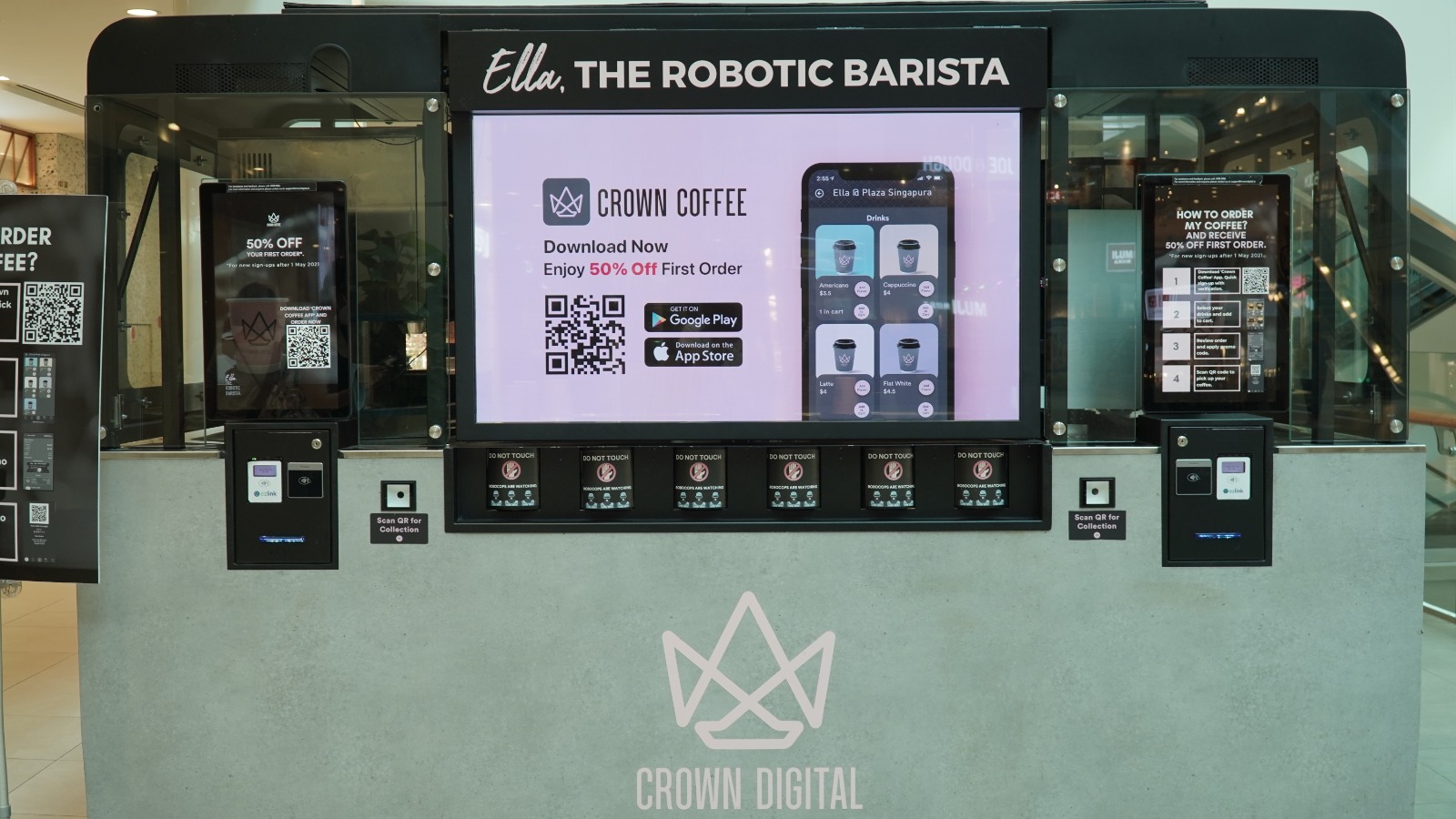 Image courtesy of Crown Digital
Image courtesy of Crown Digital
Tan believes that while manpower constraints are a hindrance to the service sector, robotic baristas like ELLA highlight how smart technological capabilities can be incorporated into traditional F&B operations.
“There is a serious manpower problem in ageing, developed cities like Tokyo and Singapore,” he said.
“Crown Digital uses robotics and automation to relieve humans of repetitive tasks, freeing them to focus on the customer experience and innovating new products. We believe this ultimately results in a more skilled, more engaged and better-paid workforce.”
Tan has since established two F&B brands under his name — Crown Coffee and Bytes Station.
Aside from reducing staffing costs, some cafés choose to invest in robots to reduce their operating costs over the long term, as the increased efficiency from the use of robots enables businesses to generate more profits later on.
For instance, robotic baristas like ELLA can brew up to 200 cups of coffee per hour – slightly more than double the number that a human barista can produce in the same time.
However, employing robots in these automated cafés does not come without its challenges, especially for small businesses that are just starting out.
Strapped with minimal resources, F&B and IoT start-ups like Crown Digital faced challenges in designing and implementing robotic baristas as well as convincing investors that there is a future in automation and artificial intelligence.
“Our biggest challenge was convincing investors that automation and AI are the future of F&B and retail," said Tan.
"As a full-stack start-up, we design and build the hardware and software, as well as develop a successful business model -- challenging tasks for a bootstrap start-up during our initial days. It took a lot of grit, hard work and conviction to overcome these challenges."
Robot cafés: a welcome or unwelcome addition?
Aside from saving on operational costs, robot cafés offer several benefits, among them is greater inclusivity.
In robotic cafés, people with disabilities can now perform roles that may have once been too challenging for them. Through the use of such integrated technology, these individuals can control the robots remotely from their homes, enabling them to indirectly earn a living as “baristas” or “waiters”.
A café in Tokyo, Japan has already begun to adopt this practice. As reported by BBC, Dawn Ver café’s robot waiters are remotely controlled by paralysed individuals who suffer from a variety of conditions that restrict their physical mobility.
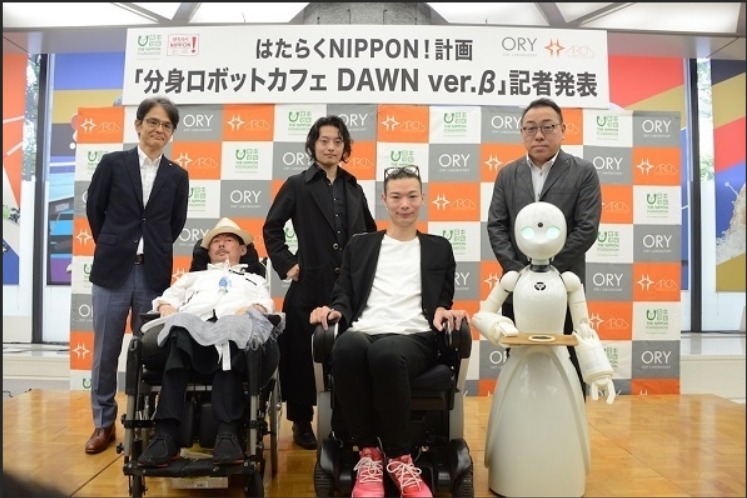 Image via SoraNews24
Image via SoraNews24
This way, automation can foster a more open and inclusive environment for people with disabilities to better integrate into and contribute to society.
In a study conducted by the Department of Hotel, Tourism, and Foodservice Management at Dongguk University-Gyeongju, South Korea, consumers' attitudes toward the use of robots in cafés are affected by two crucial factors — perceived usefulness and enjoyment, as well as the need for human interaction.
Some South Korean customers, for example, believe that robotic baristas offer better coffee and service than human employees because robotic baristas provide consistent quality. Most customers also consider the entire service encounter with a robotic barista to be a very interesting, niche, and ultimately, a pleasant experience.
The robotic barista, ELLA, for example, has been well-received by customers in Singapore and Japan, according to Tan. And they keep coming back. "We have a huge repeat following in both markets,” he said.
But when it comes down to human interaction, there are conflicting opinions.
Some customers prefer to speak to an employee as they believe that the human touch creates a warmer ambience, while others do not. Since a robotic barista can only perform simple tasks, it cannot satisfy customers’ desire for attention and interaction, causing some dissatisfaction.
However, this is good news for baristas. Although there have been long-standing employment concerns surrounding the use of robots, it appears that baristas at cafés may not face retrenchment, as of yet.
Oliver Scotting, a café manager, and barista at Machina Coffee in Scotland affirmed this, explaining that, unlike human baristas, the functions of robotic baristas are pre-programmed, which means they cannot answer customers’ queries or make product recommendations on the spot. In other words, there is still a high demand for human baristas in cafés.
Furthermore, Tan is also of the opinion that robots will not replace humans completely.
“The key here is not to fully replace humans with robots, but to most efficiently use the scarce manpower resources we do have,” he said.
What makes a successful robotic café?
Sowing the seeds of a successful robotic café business requires time, dedication, patience, and careful planning.
Firstly, to run a robot café successfully, an effective business plan — including a good customer service design — is essential.
The customer experience when visiting a robotic café to purchase a cup of coffee involves much more than simply getting a product or paying for a transaction.
“A good robot café offers premium quality consistently over and over again, coupled with fast, efficient service that is pleasantly memorable. The café must provide a seamless experience that customers find efficient and can repeat daily,” said Tan.
At times, this means going beyond the shopfront. Crown Coffee, for example, places great emphasis on its app, ELLA, that allows patrons to make a contactless (and seamless!) order.
This is particularly crucial today, when there is a a greater emphasis on health and safety.
“There are benefits in terms of post-Covid-19 safety as well. Our mobile ordering and contactless solution allows the business to operate around the clock without compromising the health and safety of people.”
And the numbers don't lie.
"Up to 95 per cent of our consumers order via the Crown Coffee app on their mobile phones without any direct contact with ELLA’s user interface," said Tan, adding that this demonstrates consumer preference for a safe, contactless experience.
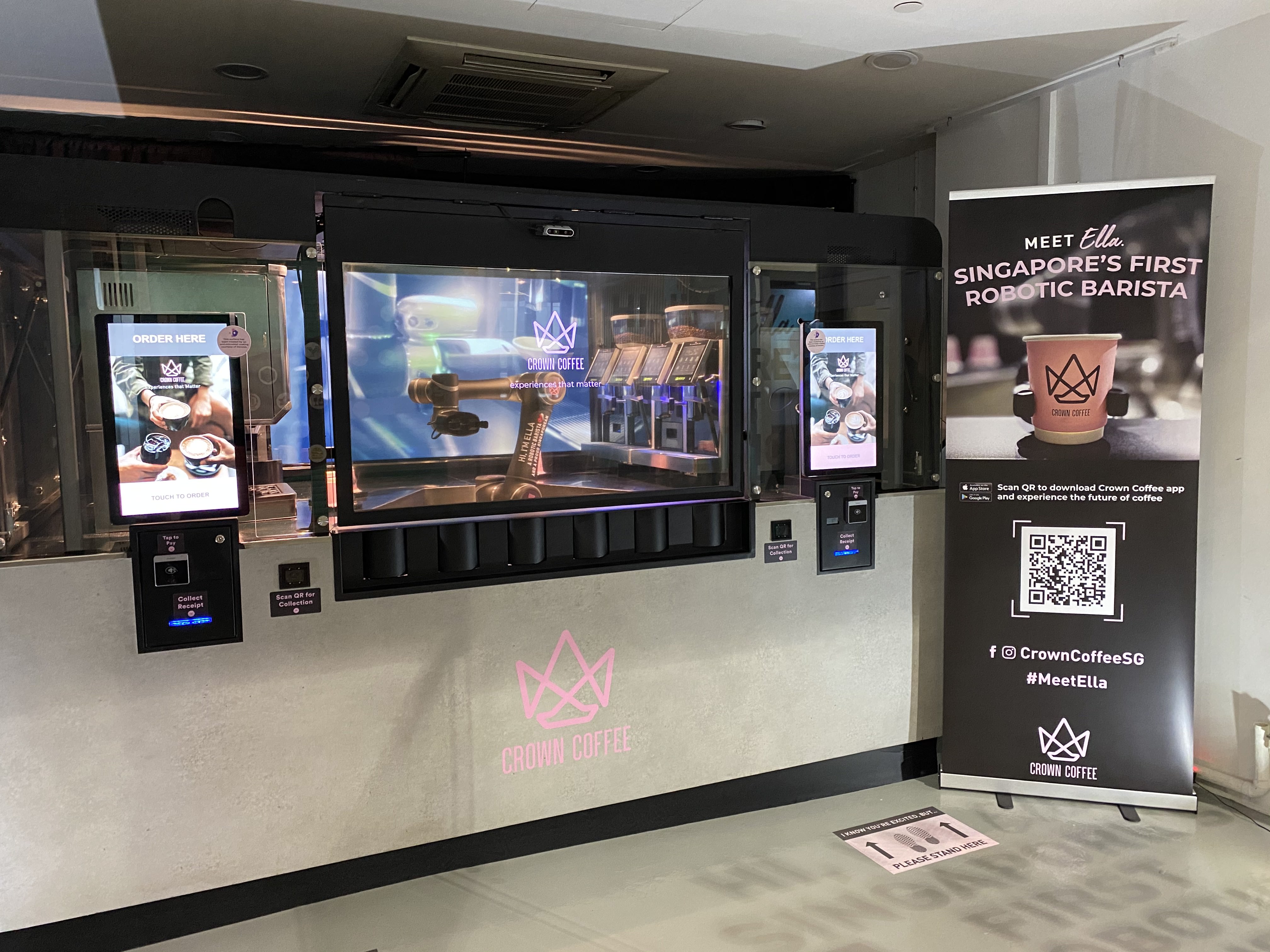 Crown Coffee's automated kiosk - Image courtesy of Crown Digital
Crown Coffee's automated kiosk - Image courtesy of Crown Digital
With a growing number of robotic cafés on the rise, robotic café owners should also strive to innovate, upgrade, and redesign their robotic baristas from time to time to retain their competitive edge.
Regular cafés vs robotic cafés: which is more popular?
I wanted to find out if people have a preference for either a regular café or a robotic one. And what better place to search for answers than the Internet?
There were a number of responses to my question on Quora and from what I could tell, it's a pretty divisive topic.
I'll leave you to read the thread here, but in summary: Artisanal cafés remain the go-to spots for some who choose to patronise robotic cafés solely for the novelty factor. Others prefer a more modern twist as robotic cafés guarantee consistency in the quality and quantity of their beverages.
Besides the quirkier, more unusual and unique features of robotic cafés, some netizens indicated that they prefer to purchase their caffeine fix at robotic cafés instead of at conventional cafés like Starbucks, as the prices at robotic cafés tend to be less expensive.
For comparison, a cup of regular latte at Crown Coffee costs around S$3 while a cup of regular latte at Starbucks costs S$6.60.
The big question: Are robotic cafés here to stay?
Many trends ebb and flow with time.
An example of this is the “bubble tea craze” which first surfaced between the late 1990s and early 2000s.
Even though the drink has experienced a resurgence in popularity of late, we cannot deny that bubble tea shop owners suffered enormous losses in 2003 when the novelty subsided.
This brings us back to our question: Will robotic cafés lose popularity and suffer a similar fate as the bubble tea shops of 2003 or will they be able to weather the test of time?
The International Federation of Robotics explains that the world has already seen a paradigm shift towards automation and innovation, with Singapore having the highest robot density of 918 robots per 10,000 employees in 2019, ahead of South Korea and Japan.
As more countries invest in research and development programmes to develop the robotics sector, it bodes well for the growth and expansion of robotic cafés in the global economy.
In South Korea, the country is pushing to develop the robotics industry as part of the Intelligent Robot Development and Supply Promotion Act. In 2020, the robotics research budget set by the South Korean government was ₩151 billion (S$167 million).
A Quora user responded to another of my question with an insightful observation: Most cafés are already utilising robots and automation as they evolve with the times.
For example, just think about the number of F&B businesses that have adopted a completely digital ordering system or QR code menus over the last few years. In this vein, I think it's quite safe to say that AI-driven robotic baristas might just be the next step in the evolution of local cafés.
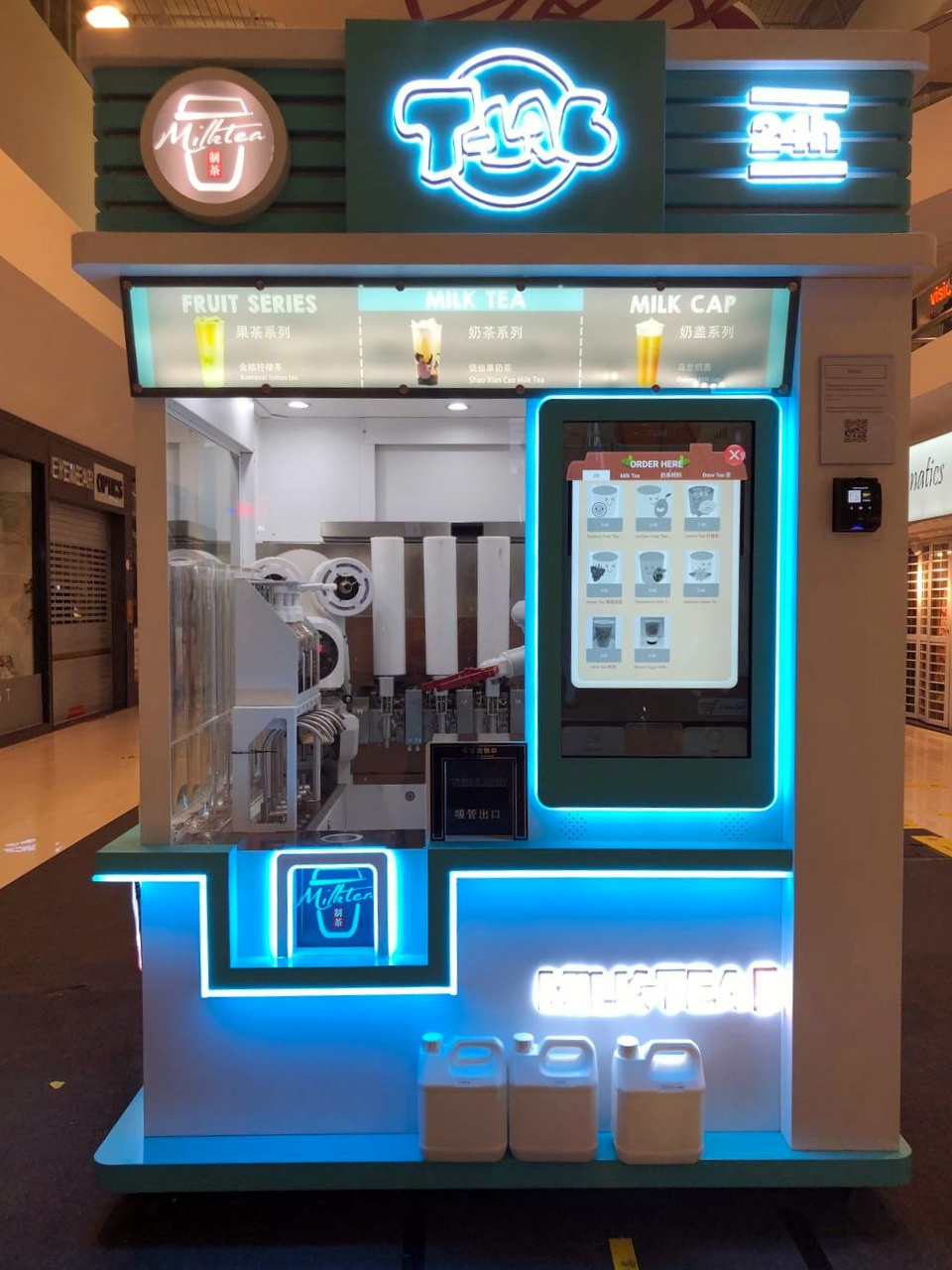 Case in point: Just this weekend, a colleague spotted this milk tea booth that was manned (haha) by a robot at Thomson Plaza. Image by Fiona Tan.
Case in point: Just this weekend, a colleague spotted this milk tea booth that was manned (haha) by a robot at Thomson Plaza. Image by Fiona Tan.
Meanwhile, robotic café owners and digital start-up companies are also taking bold steps towards pursuing new endeavours.
Tan revealed that a large number of corporate offices seeking a permanent coffee solution have expressed interest in ELLA. Crown Digital has deployed ELLA at the new SAP office in Singapore. Additionally, ELLA will launch at 30 MRT stations in Singapore this year.
“We are not just stopping at ELLA as there is endless potential for the industry to grow and become more efficient and safer for communities and individuals,” said Tan who believes that automation is the way forward.
“It isn't easy to go through your day without AI interaction. Robots are prevalent in everyday life and activities, from checking temperatures and delivering food to sanitising counters. We expect more robots to enter a range of different sectors over the next couple of years. The future of AI-driven solutions is vast and exciting, and we are just getting started.”
As the world continues to move towards a robot-dominated future, it is evident that robotic cafés will likely be around for the long haul. In time, the question might even be: Are conventional cafés here to stay?
Top images by The Ratio Inc. and Claire Teo.
Mothership Explains is a series where we dig deep into the important, interesting, and confusing going-ons in our world and try to, well, explain them.
This series aims to provide in-depth, easy-to-understand explanations to keep our readers up to date on not just what is going on in the world, but also the "why's".
Follow and listen to our podcast here
If you like what you read, follow us on Facebook, Instagram, Twitter and Telegram to get the latest updates.
